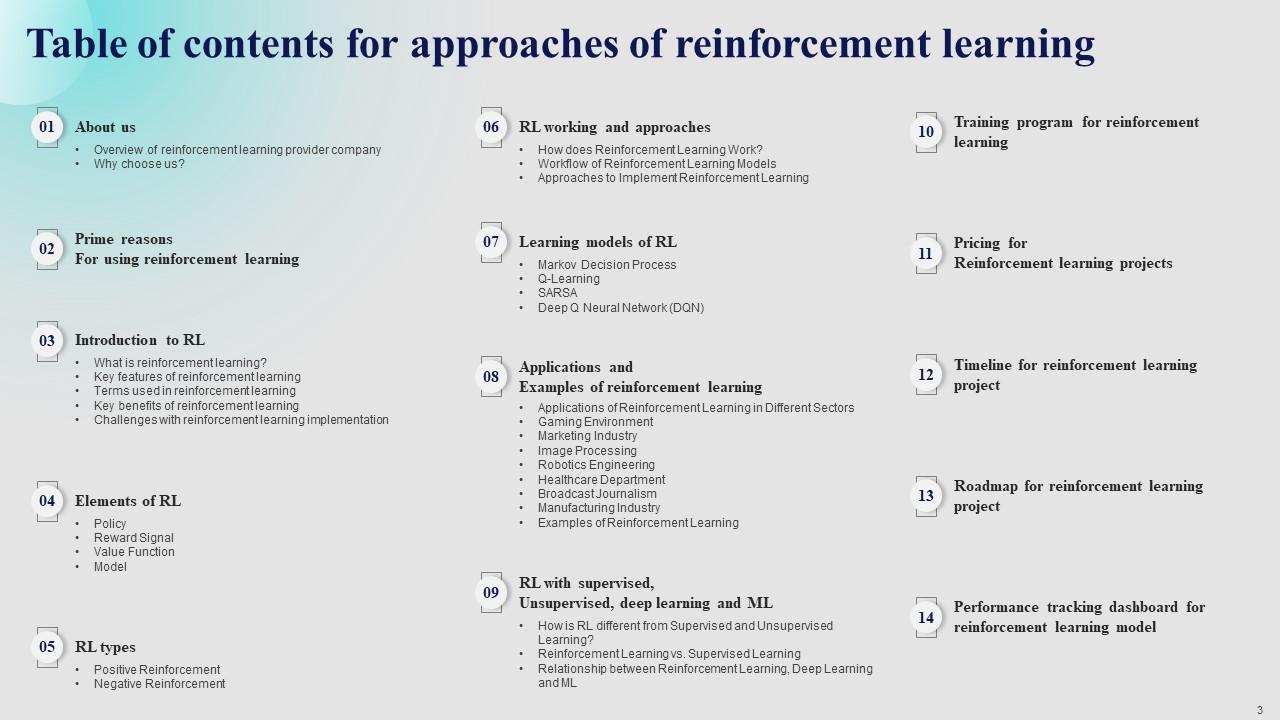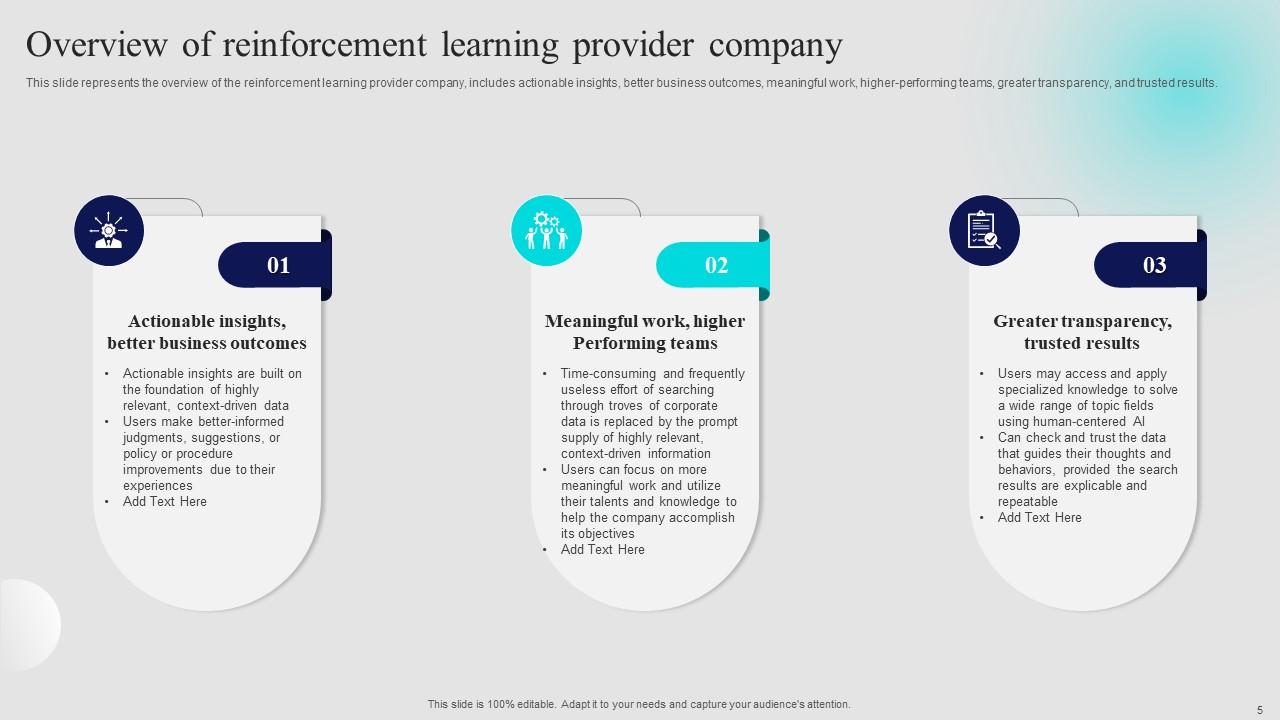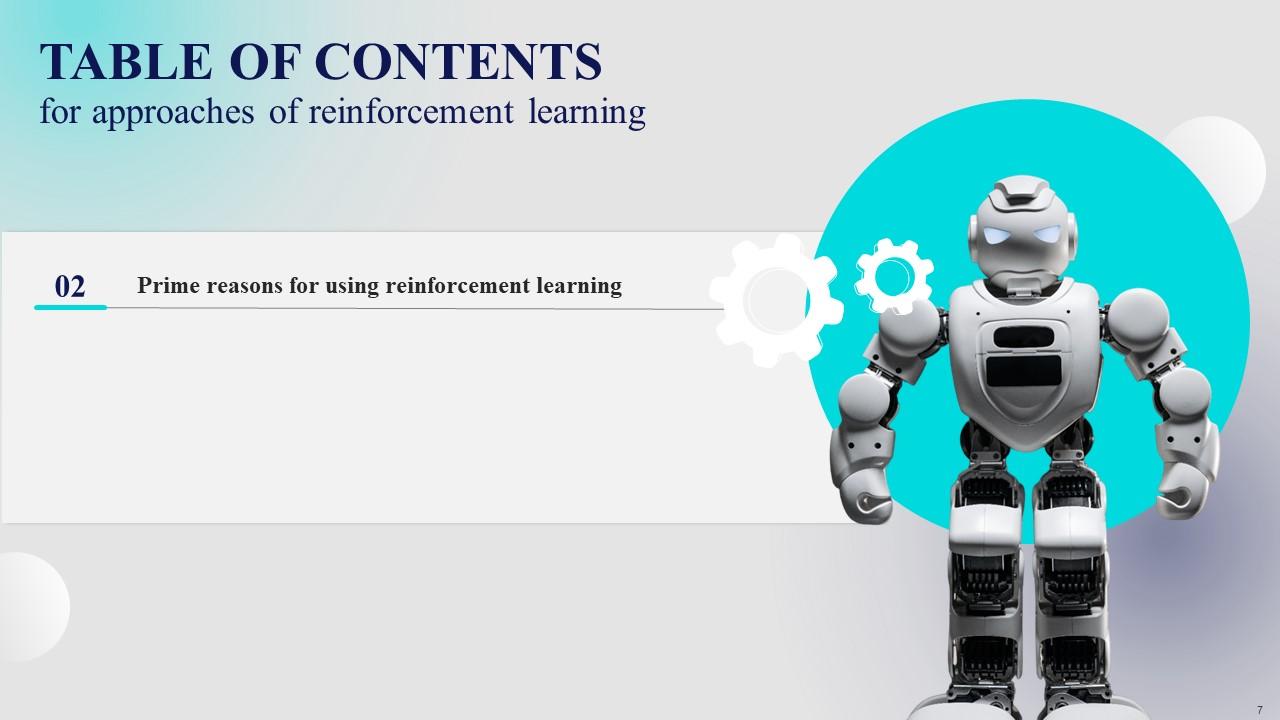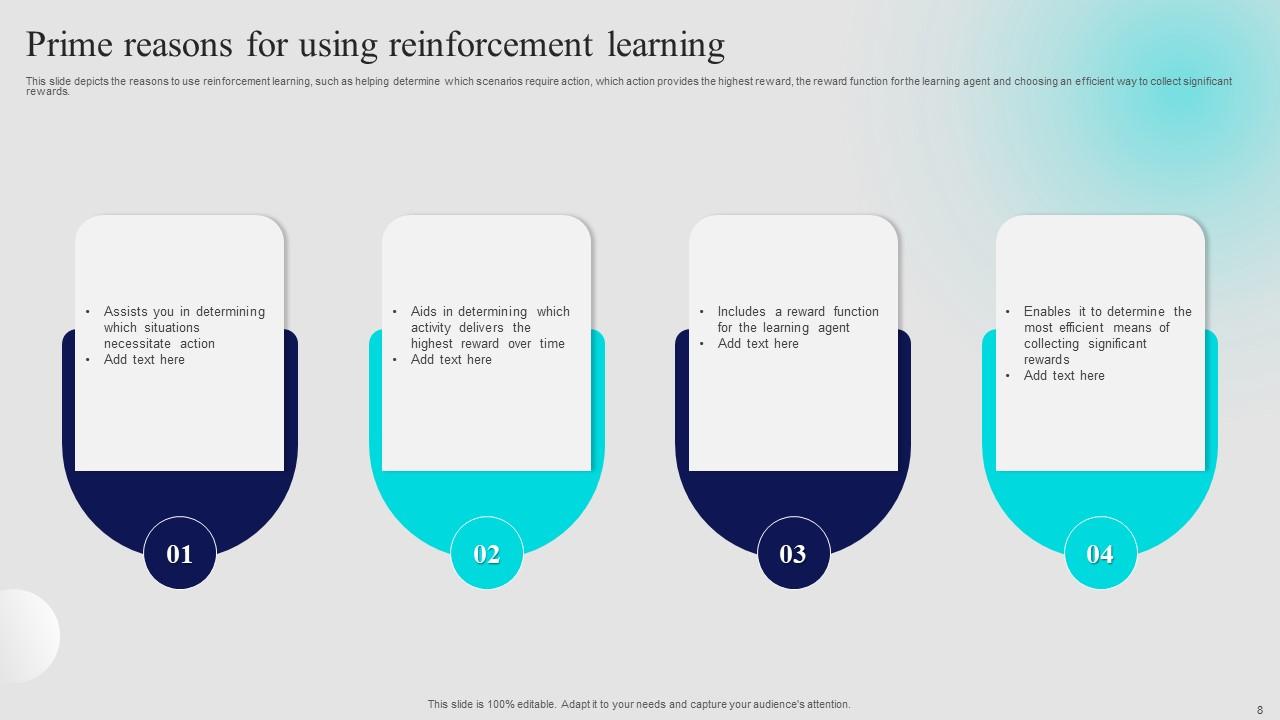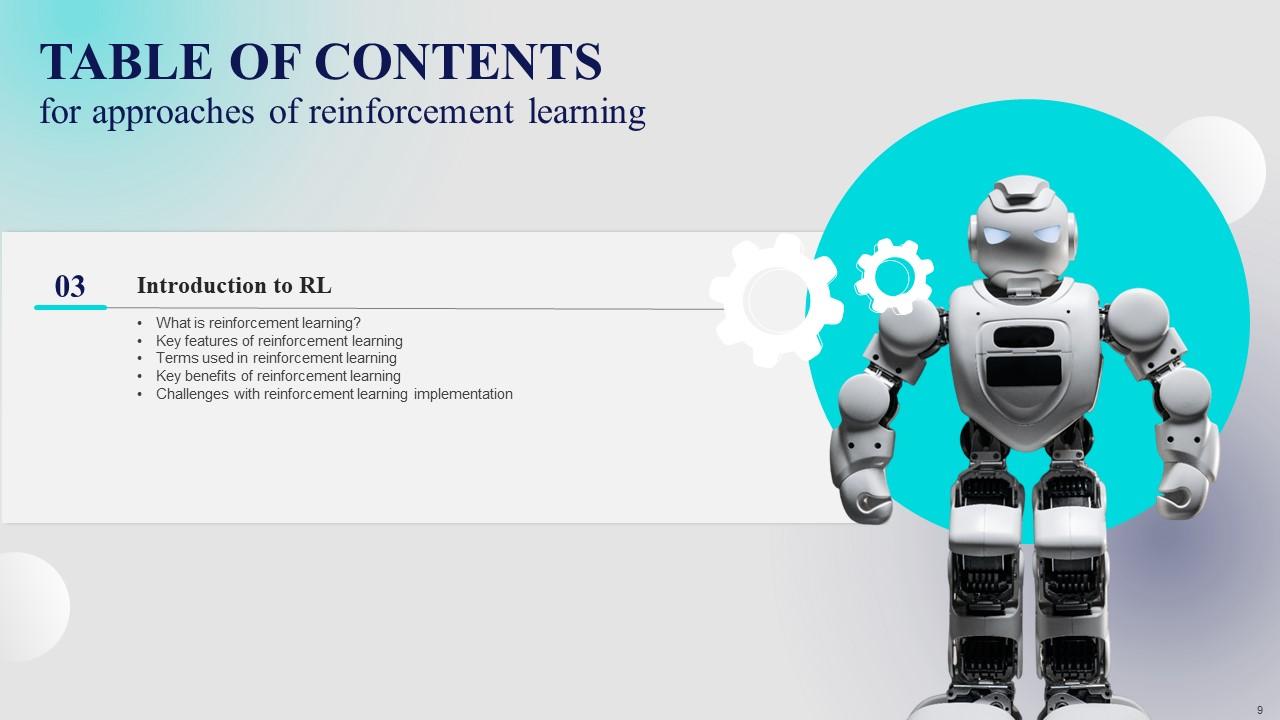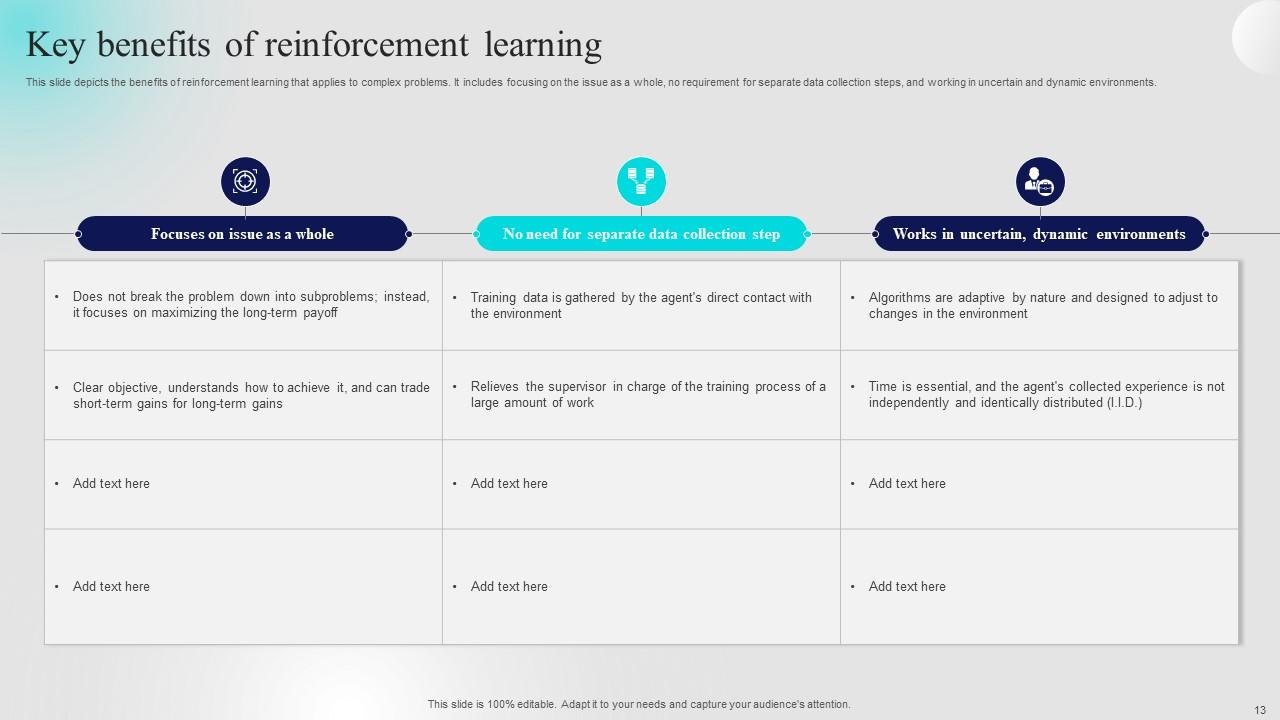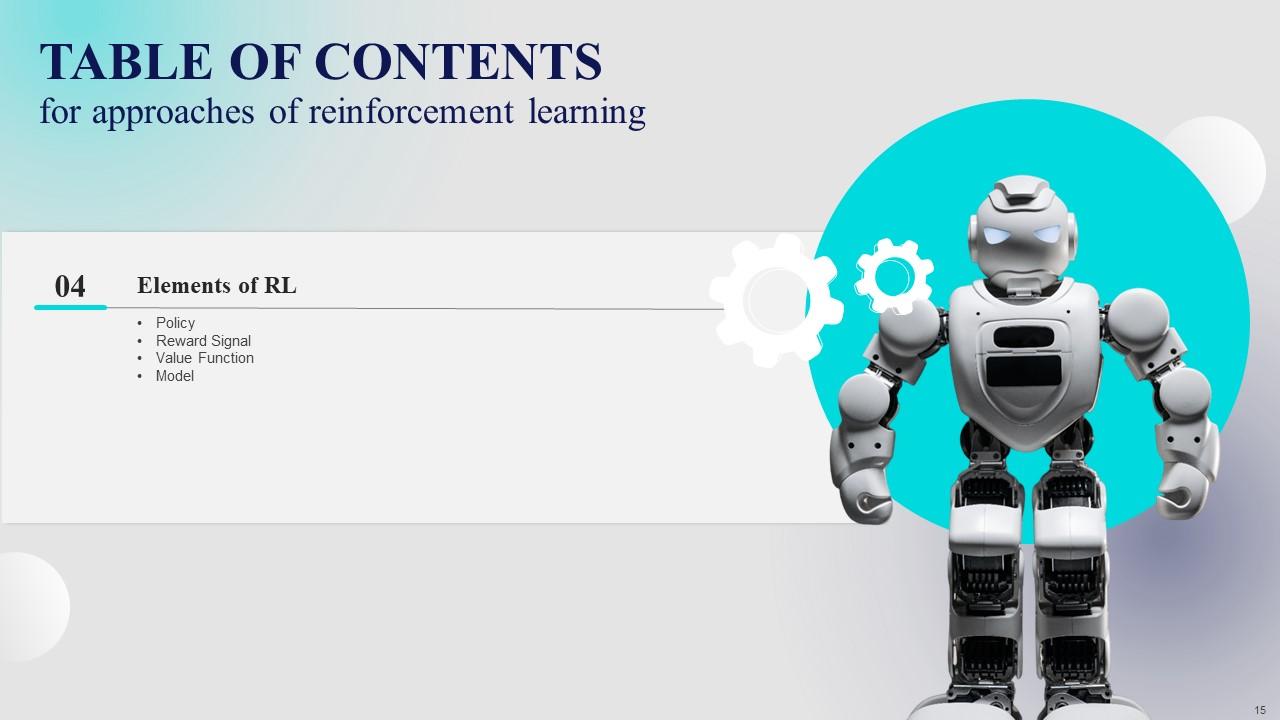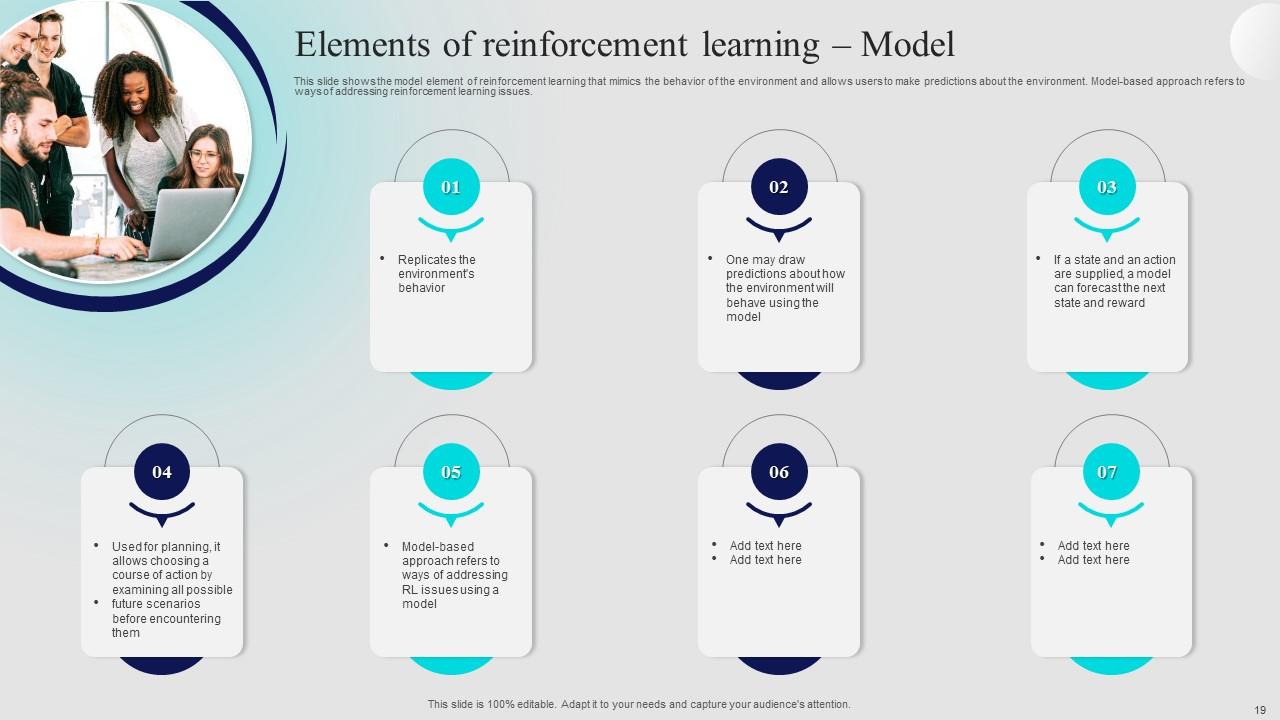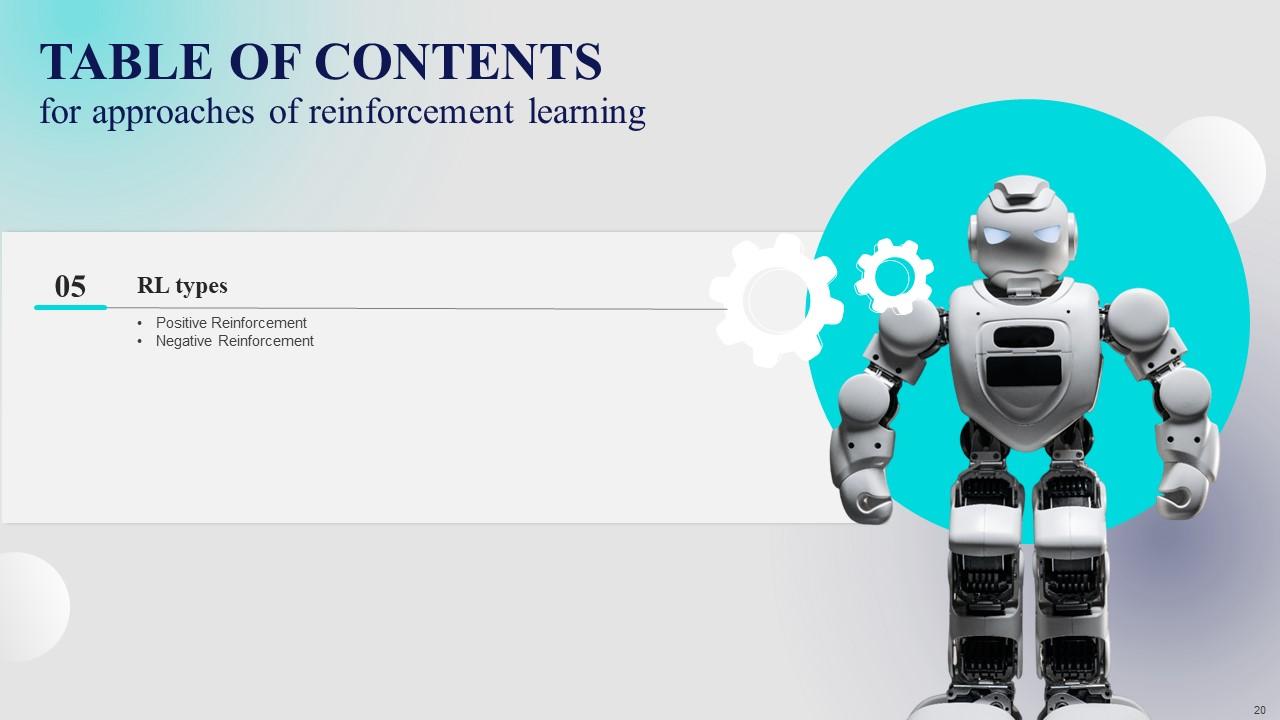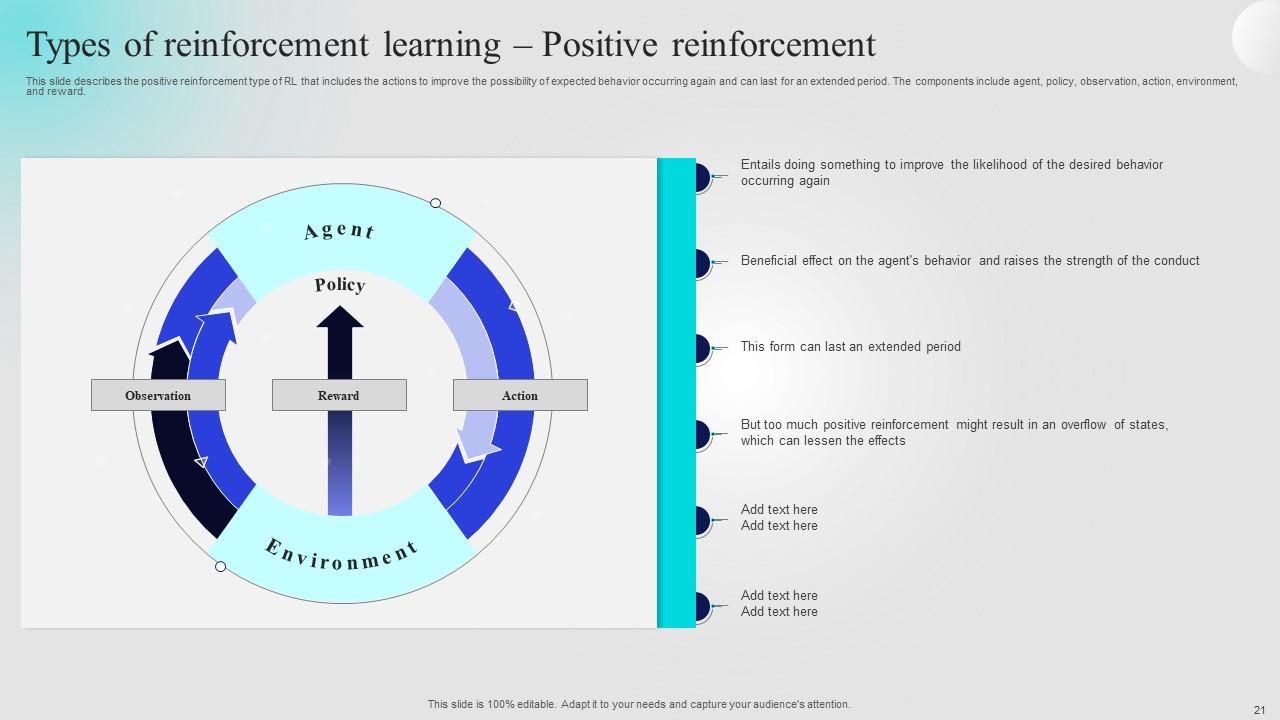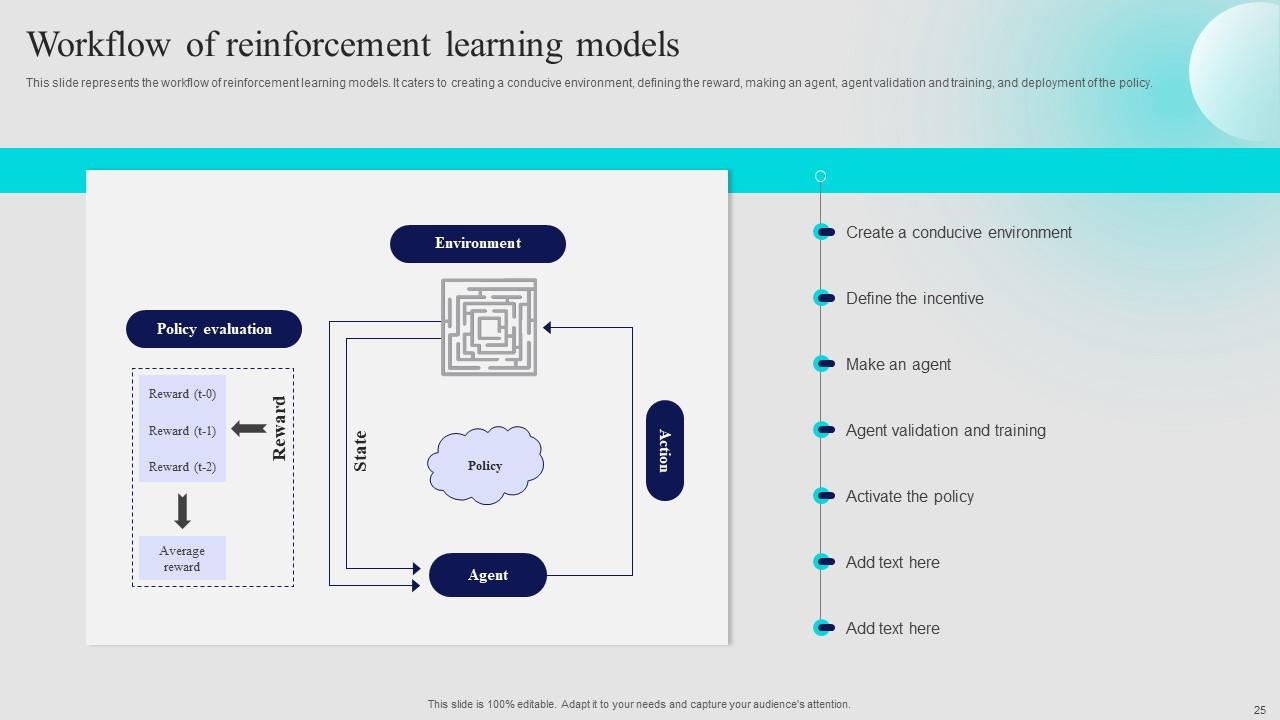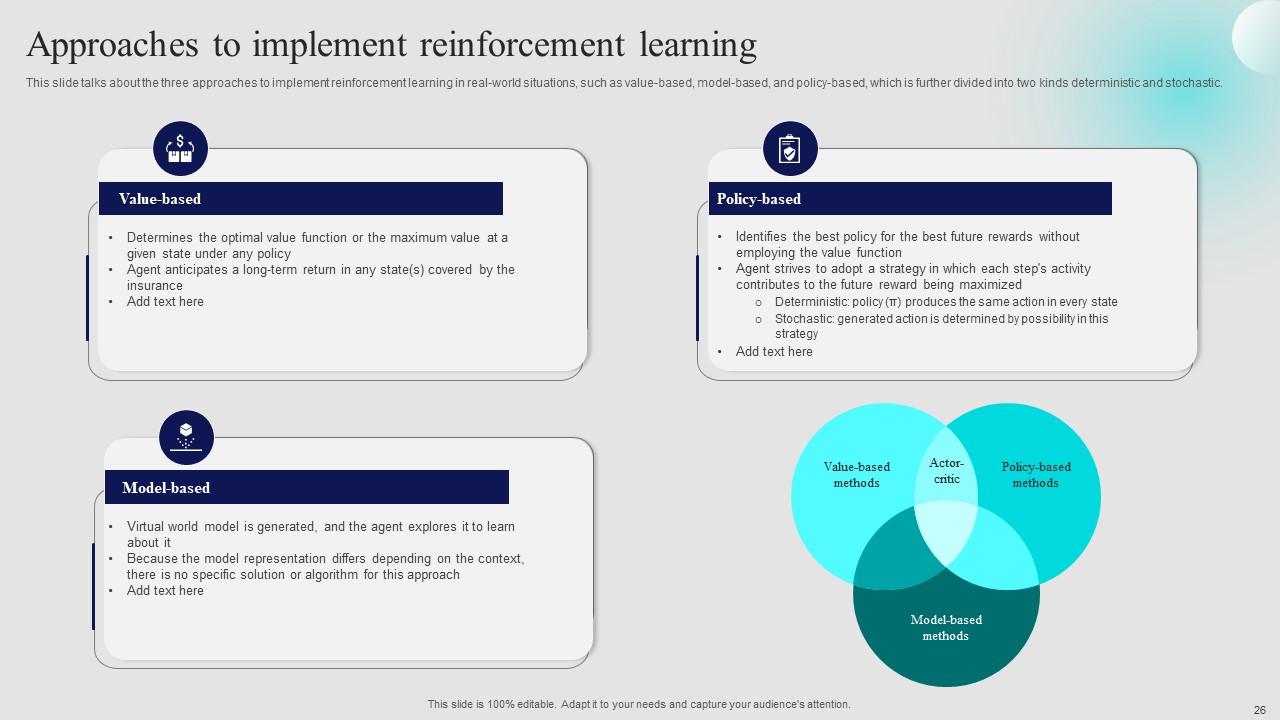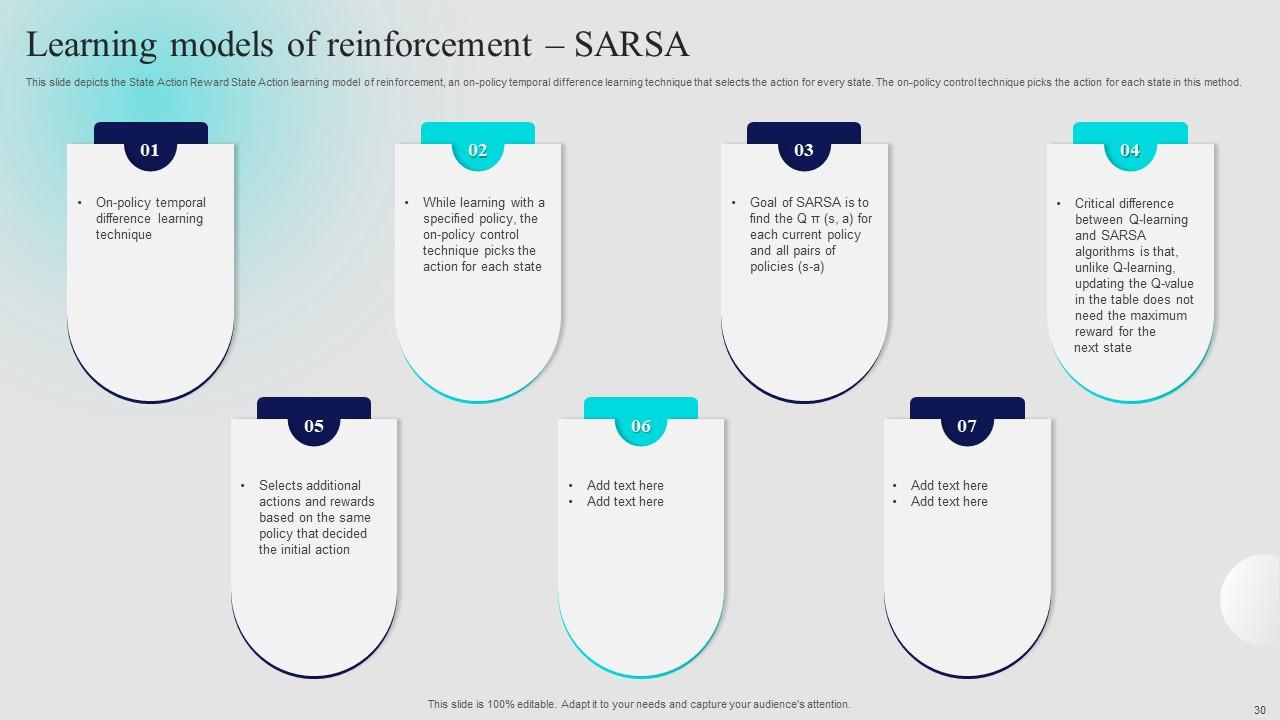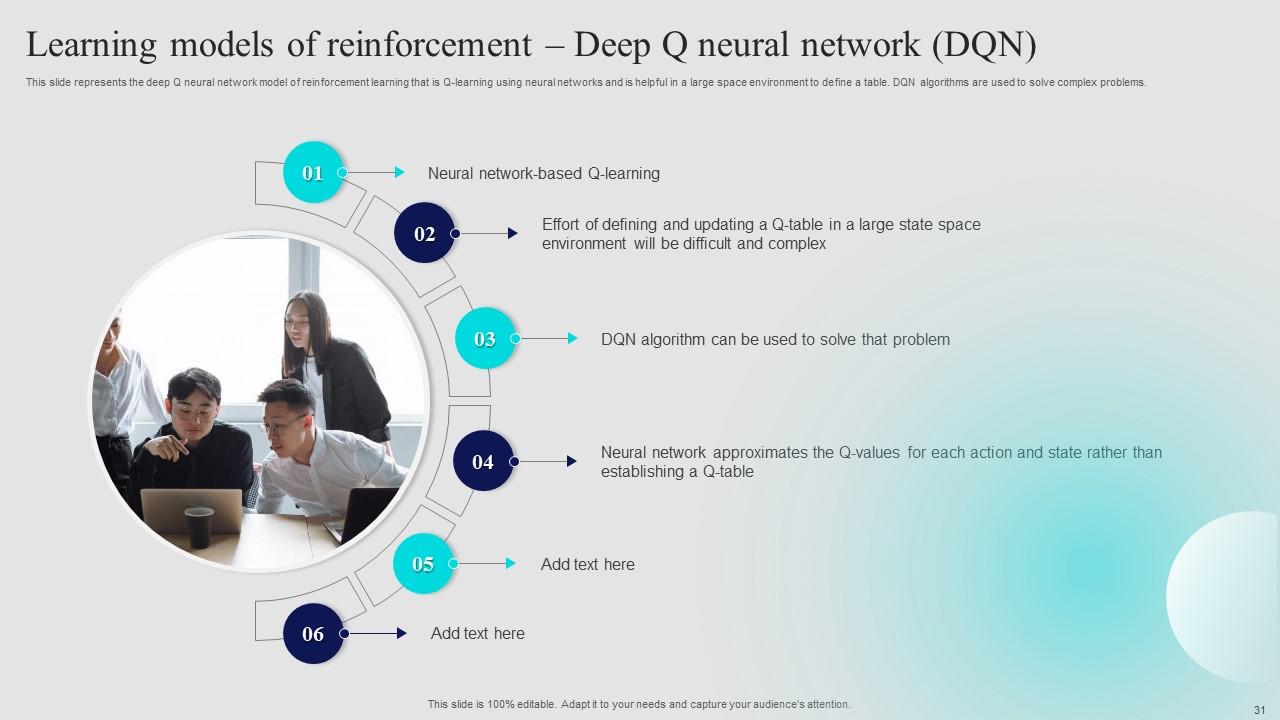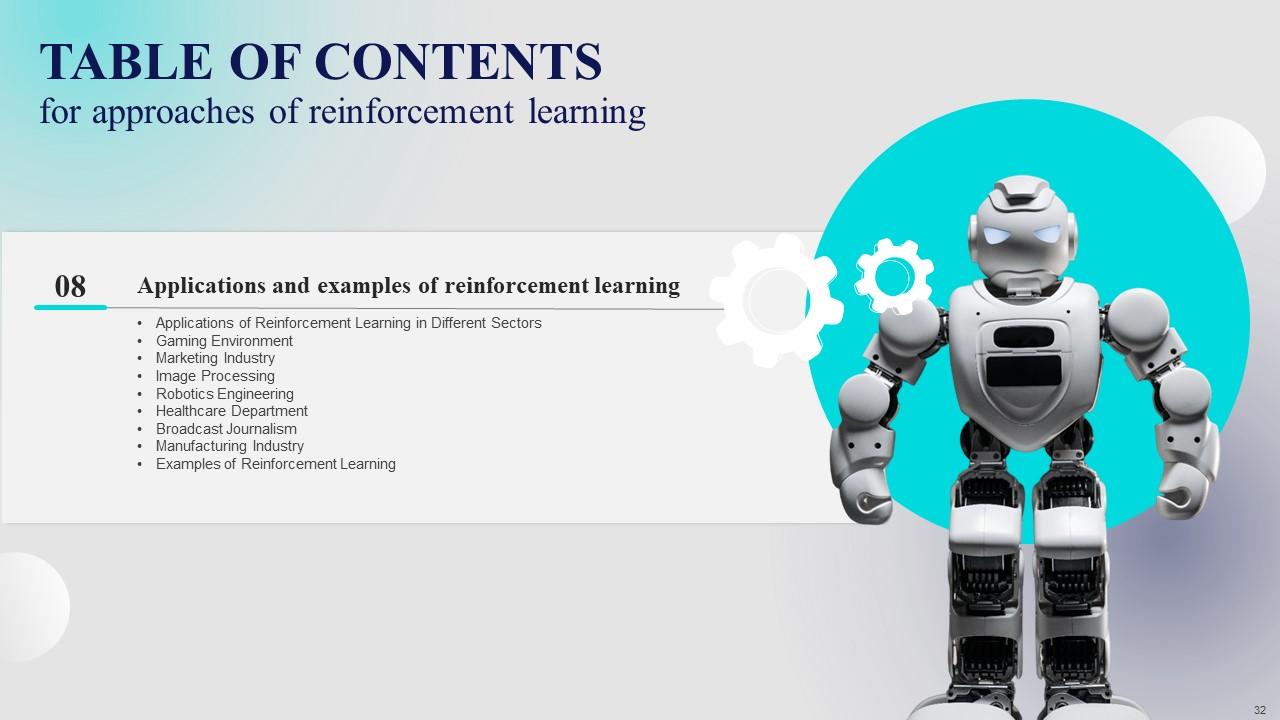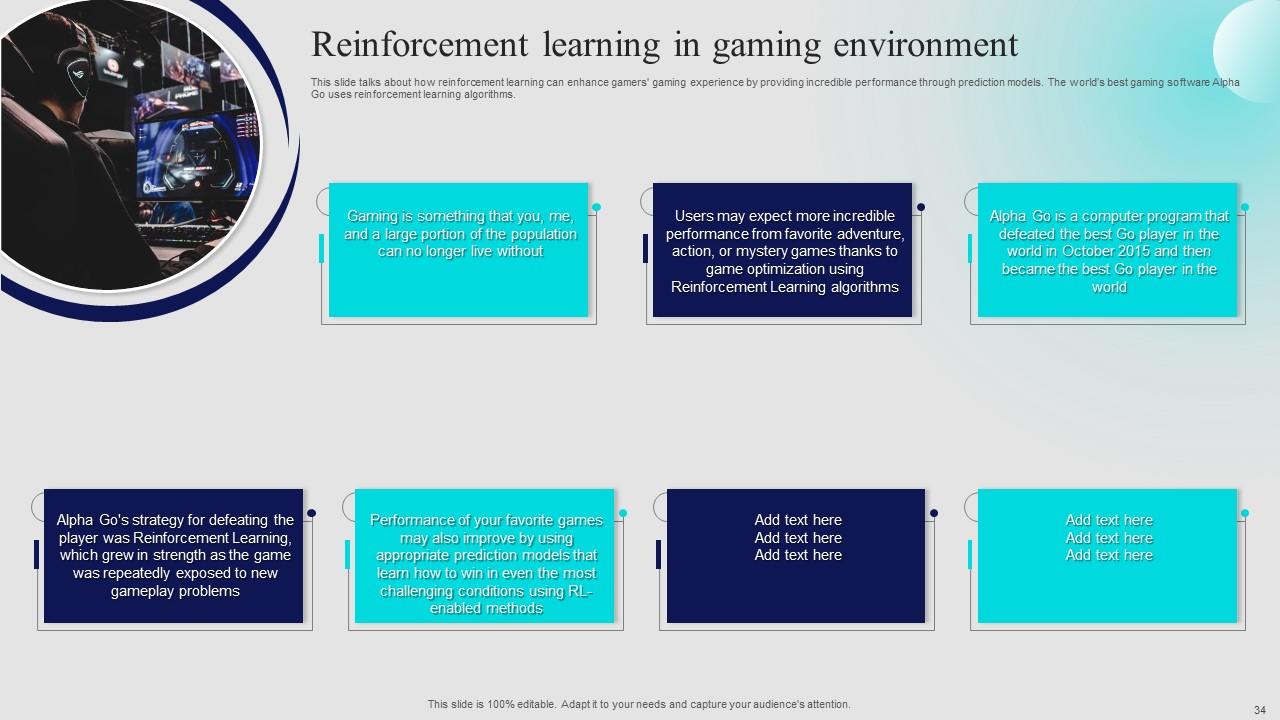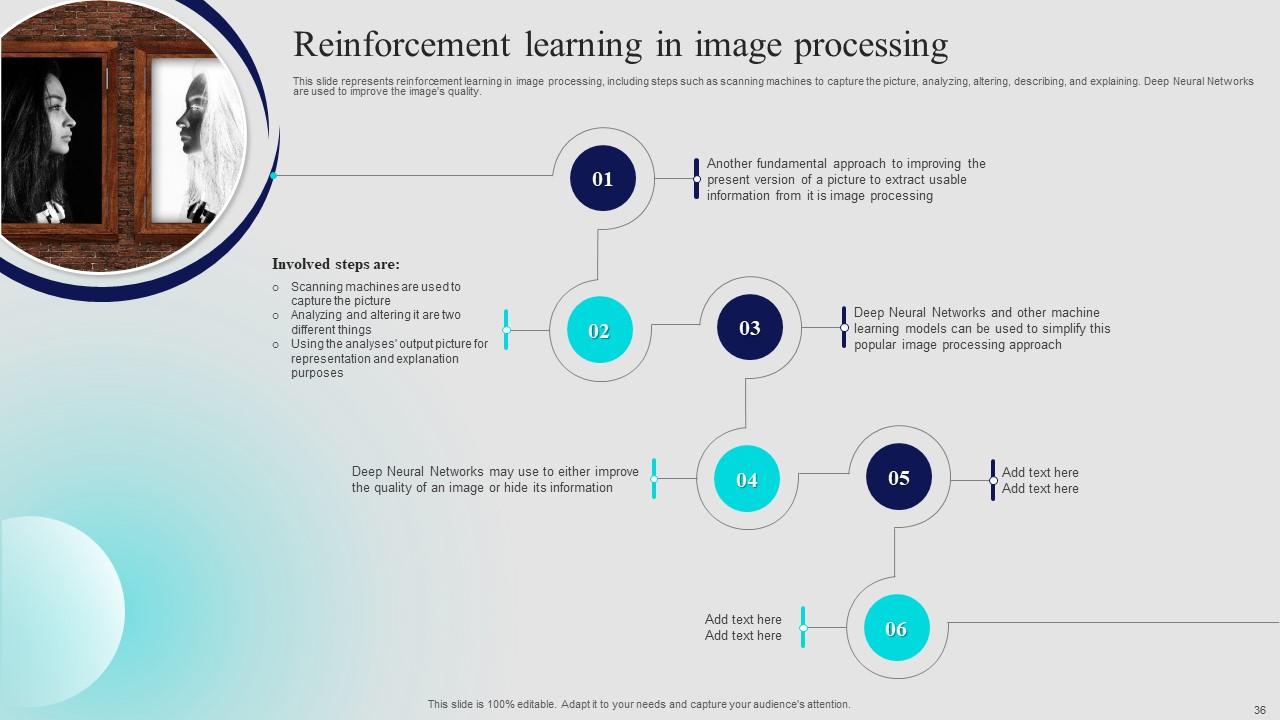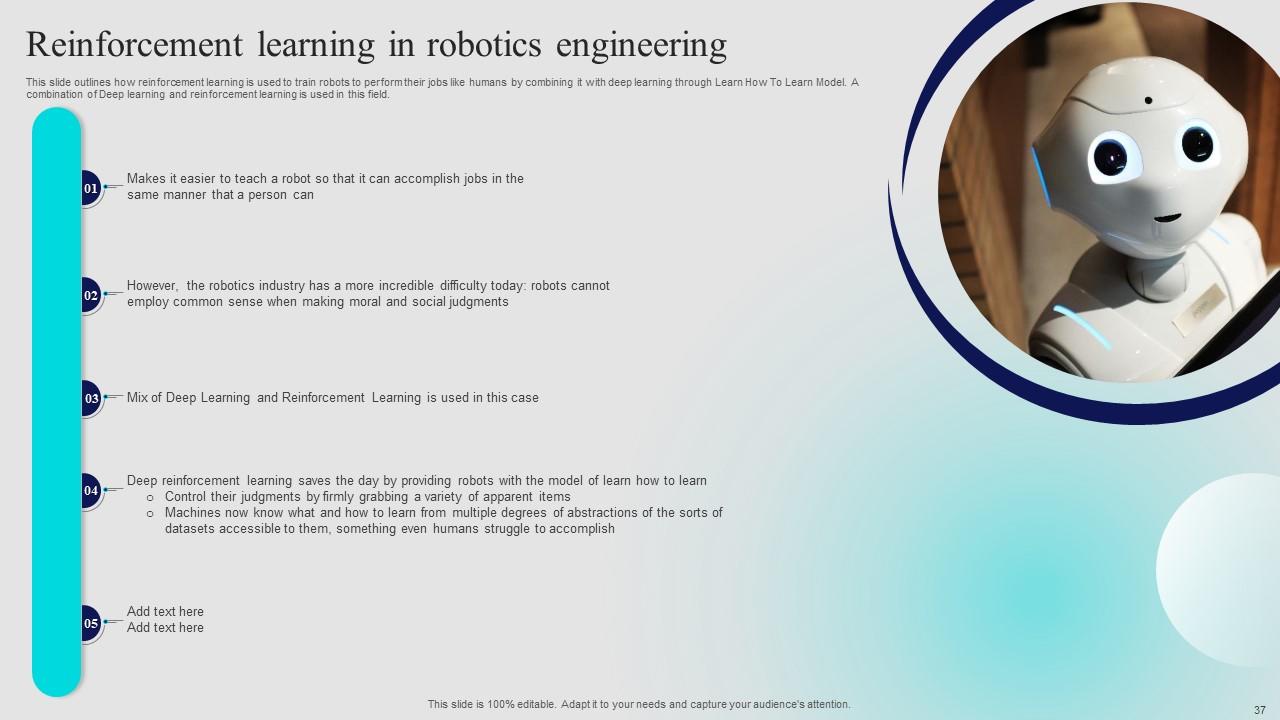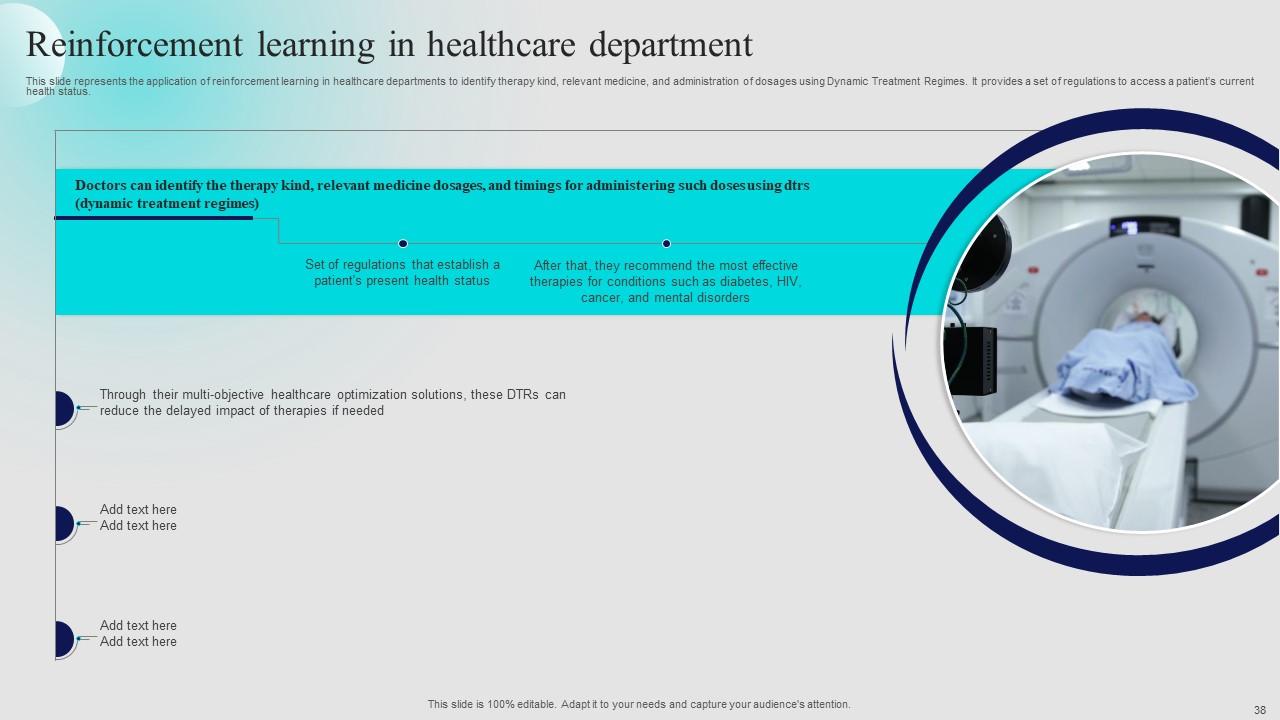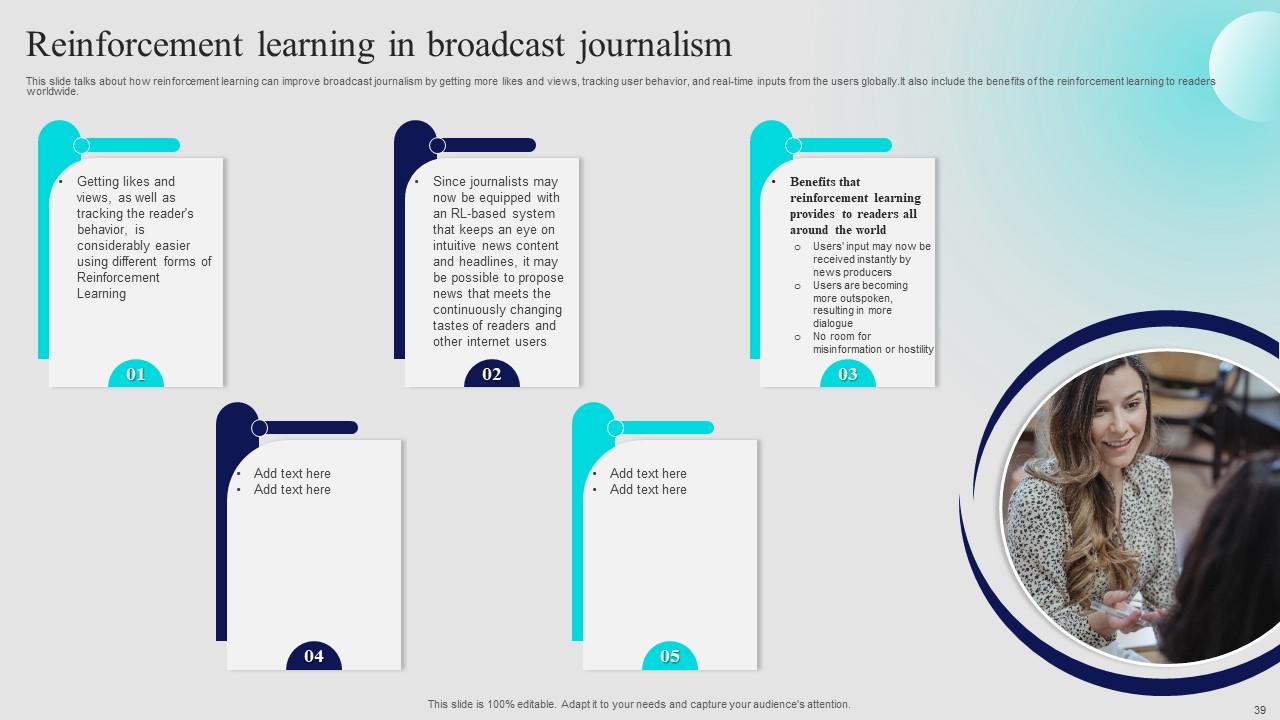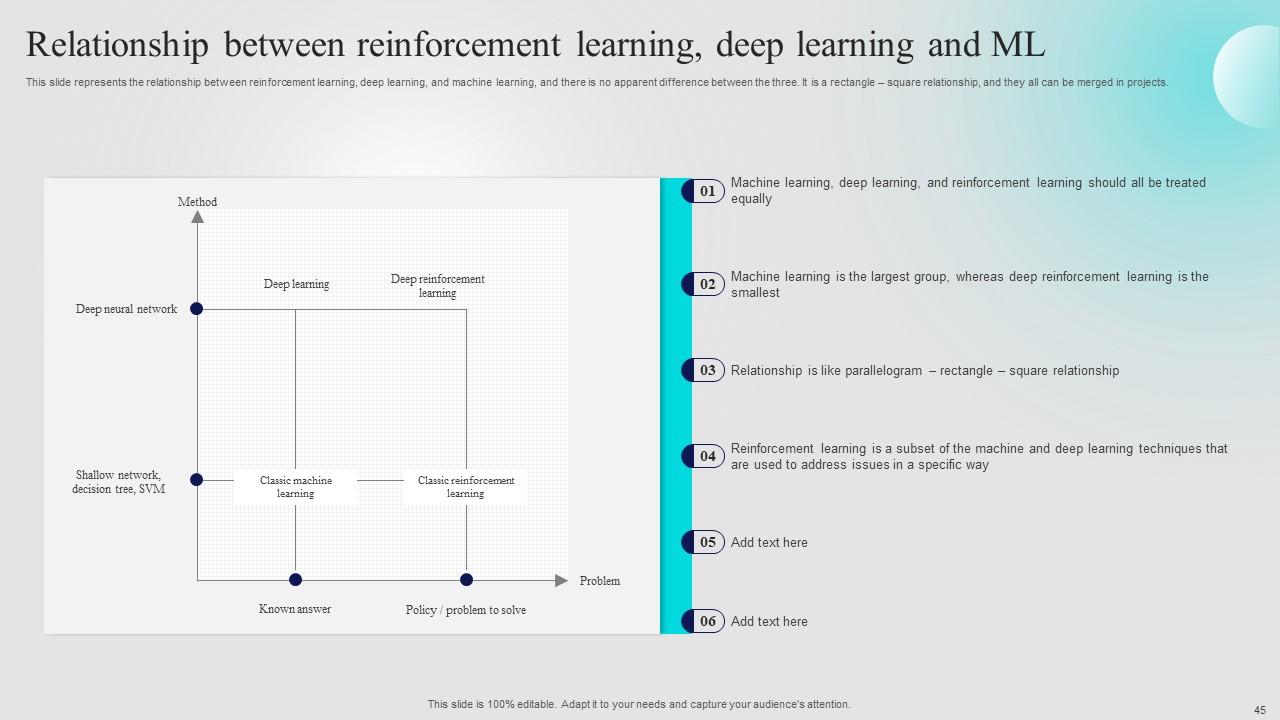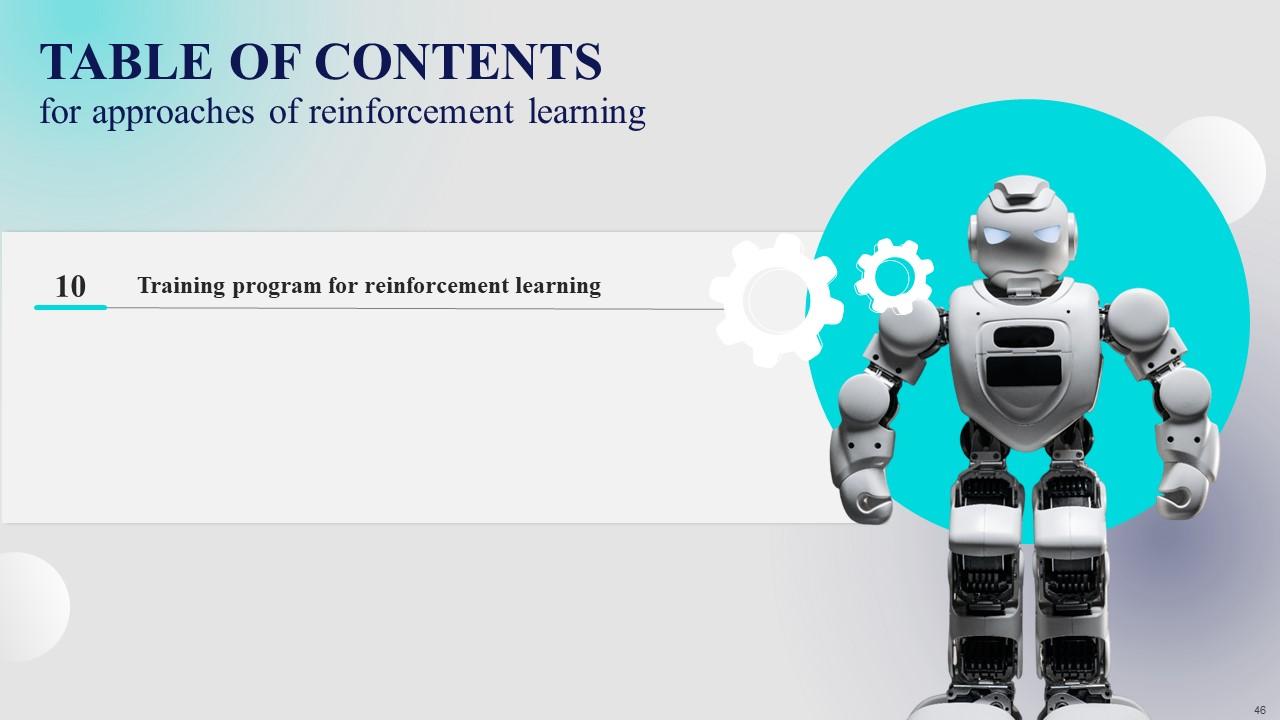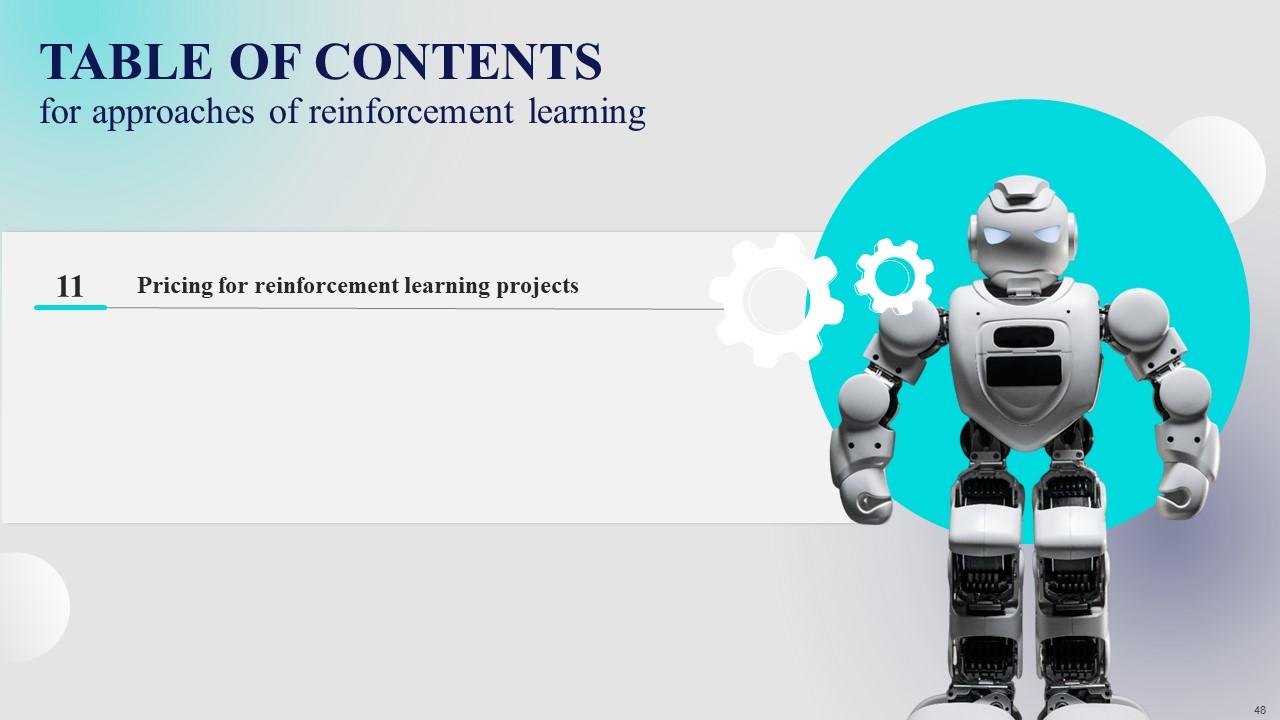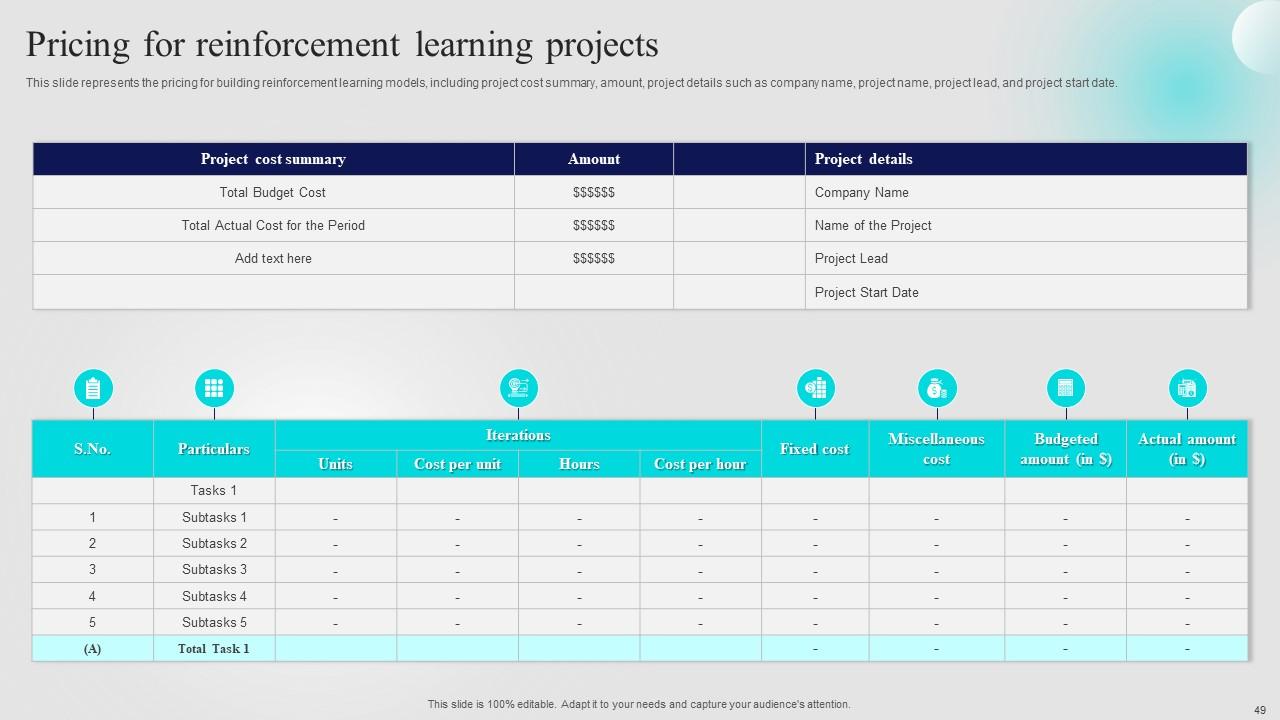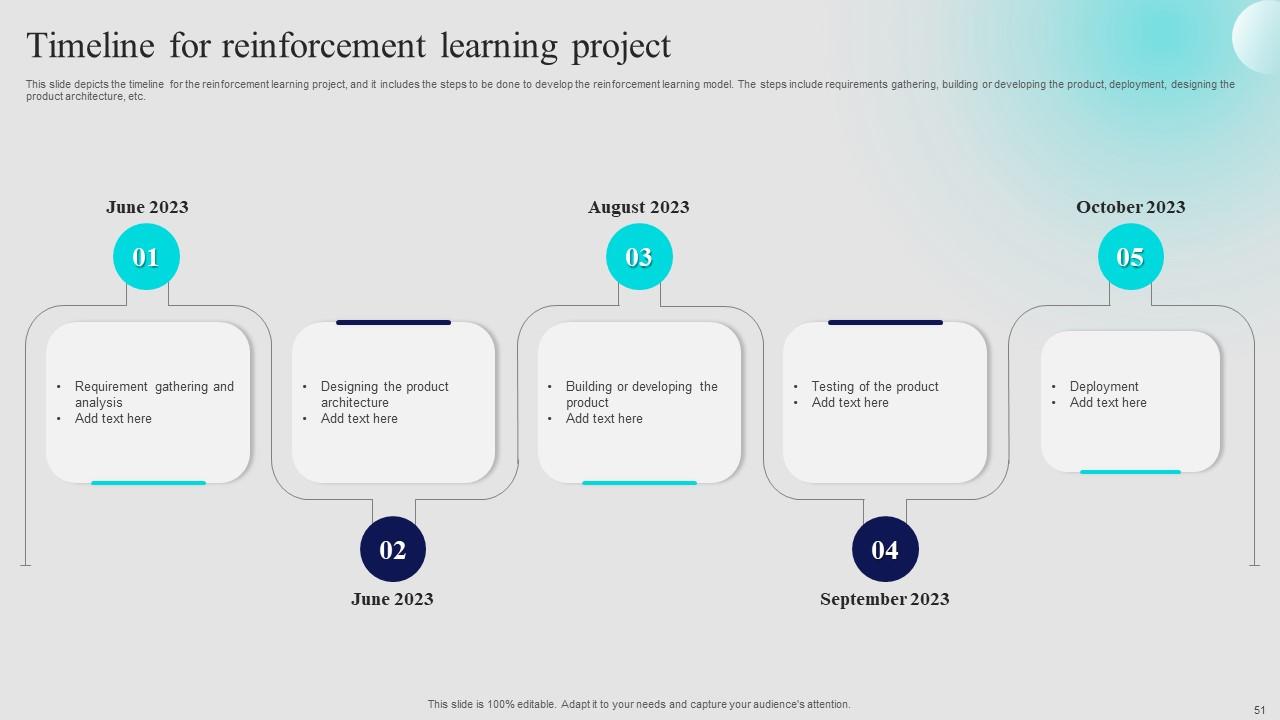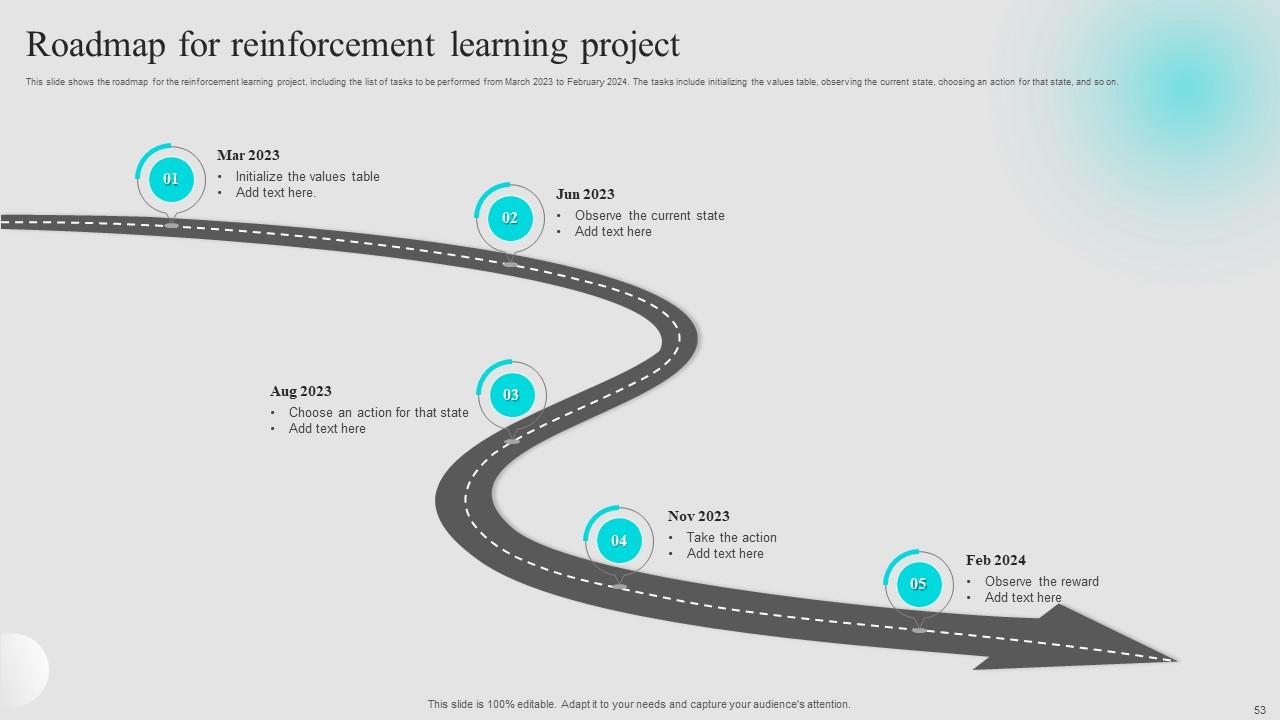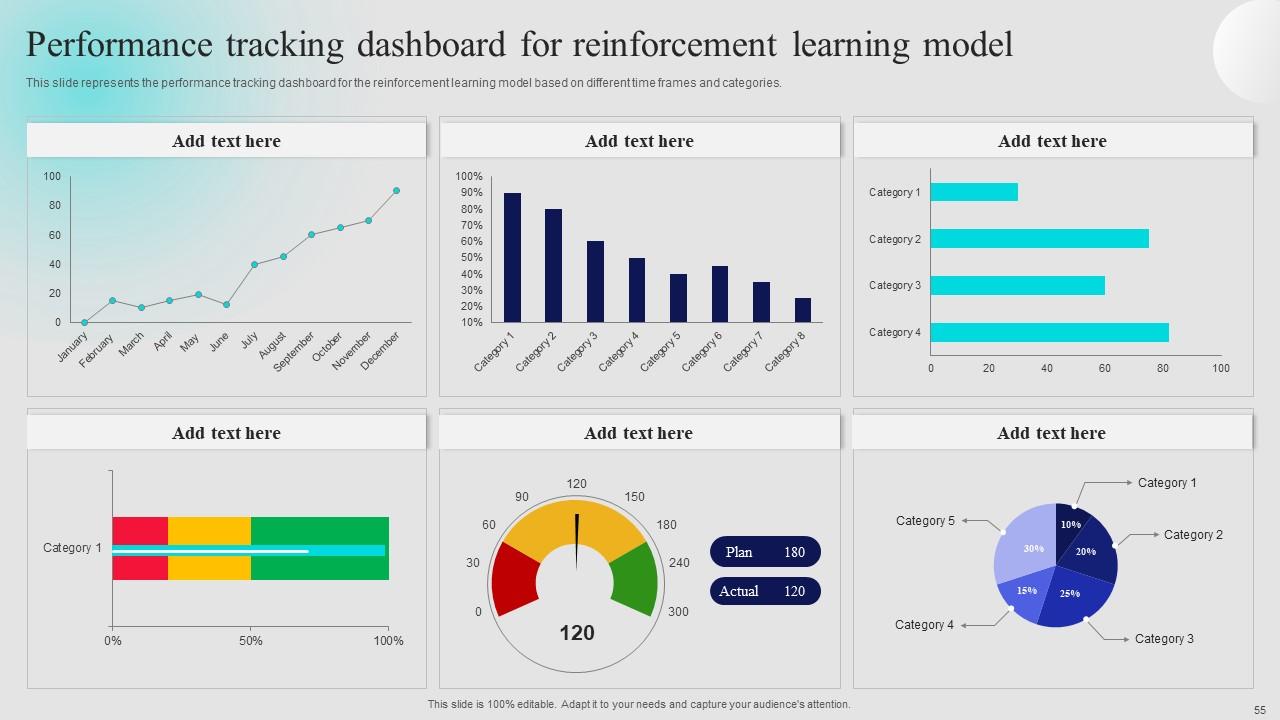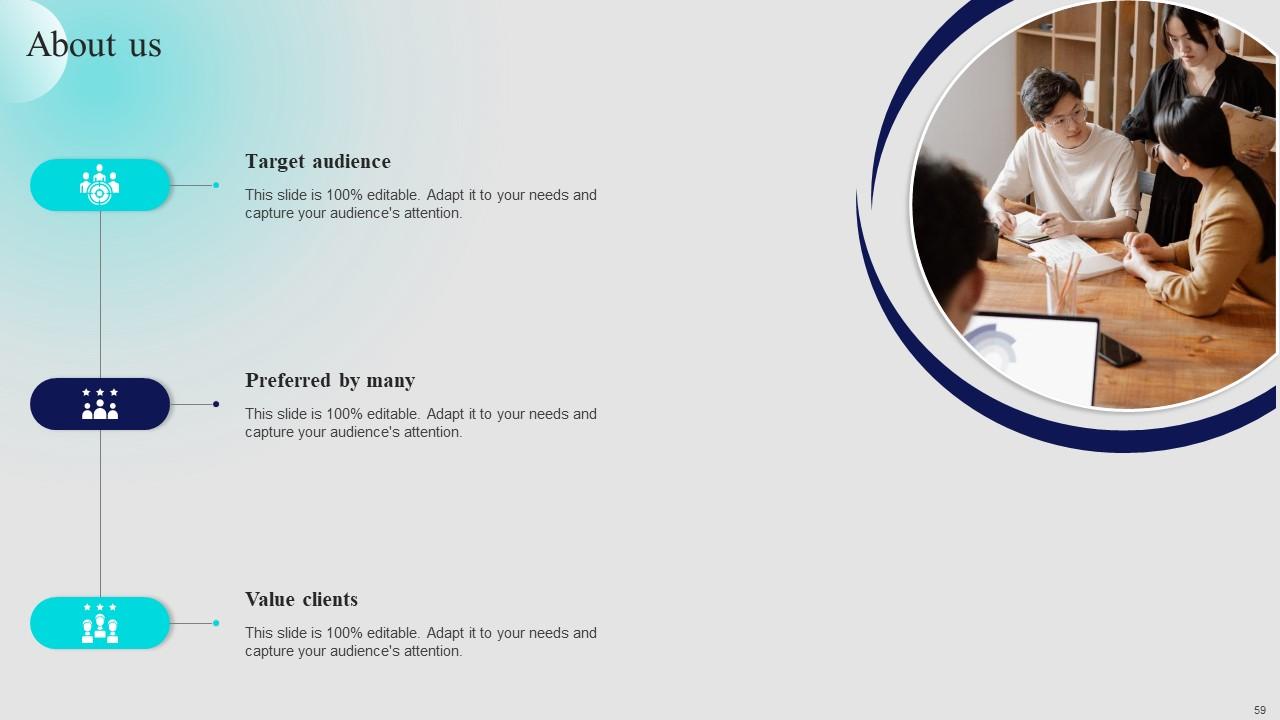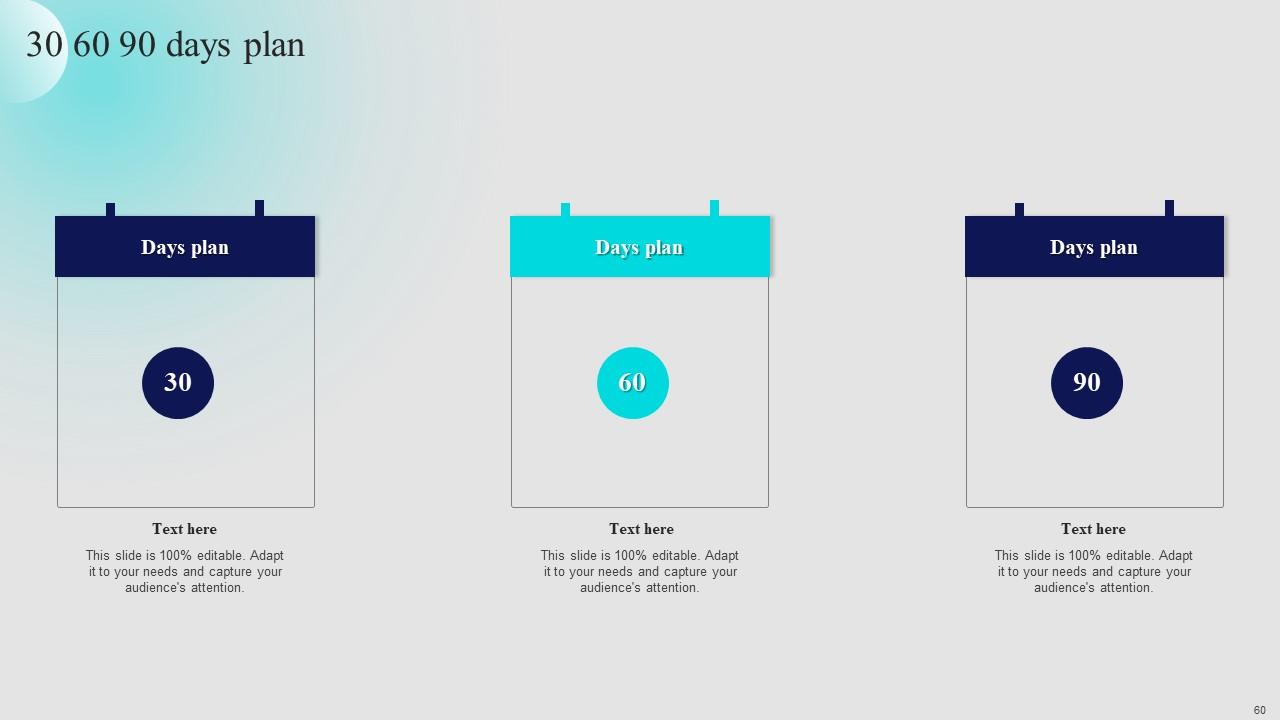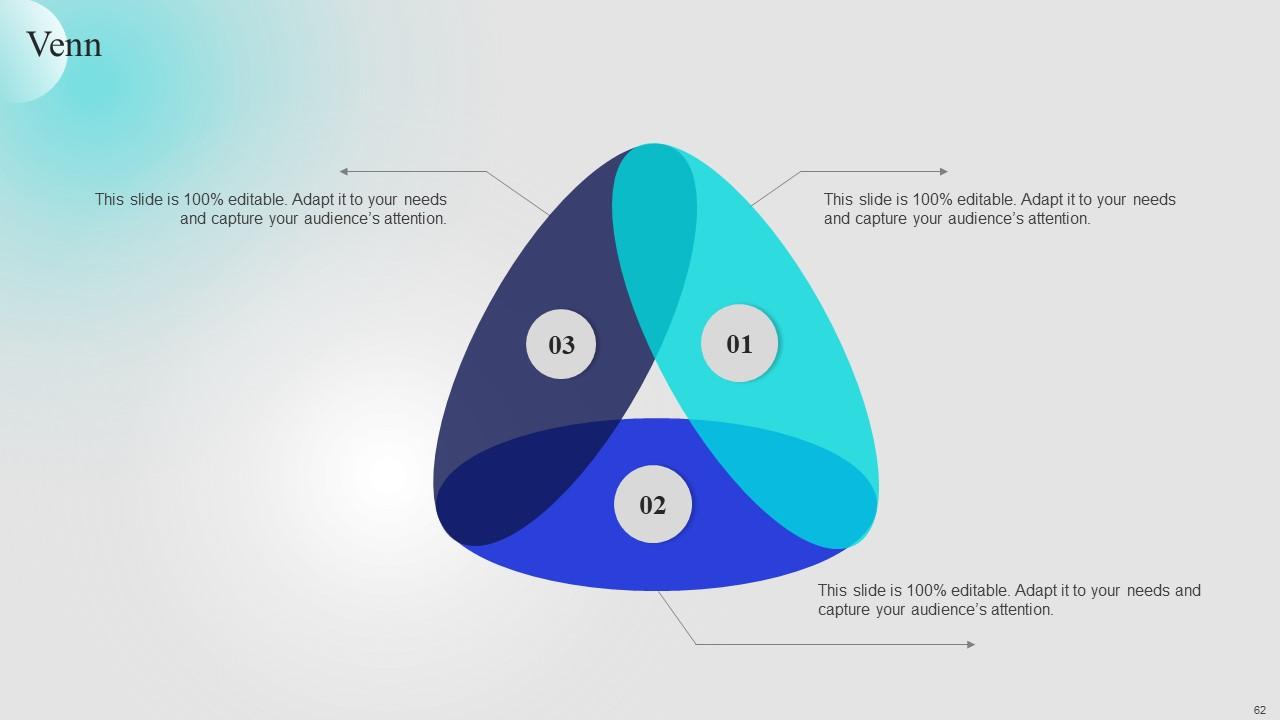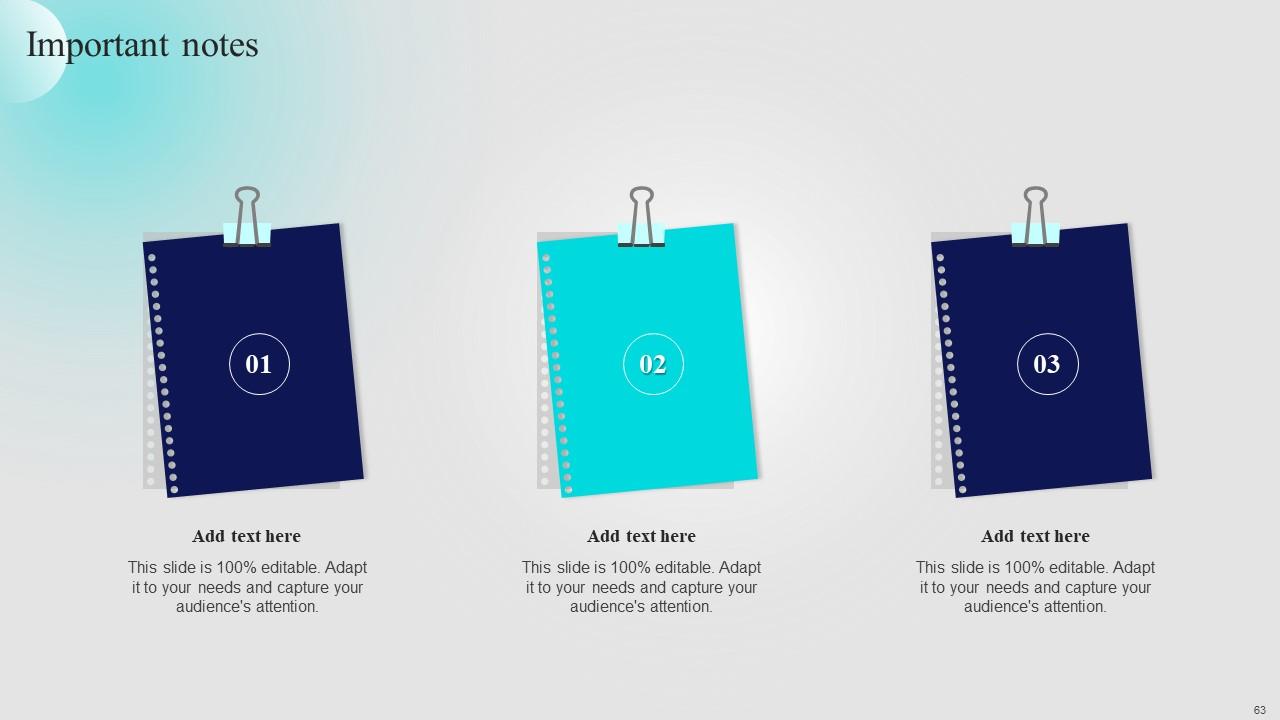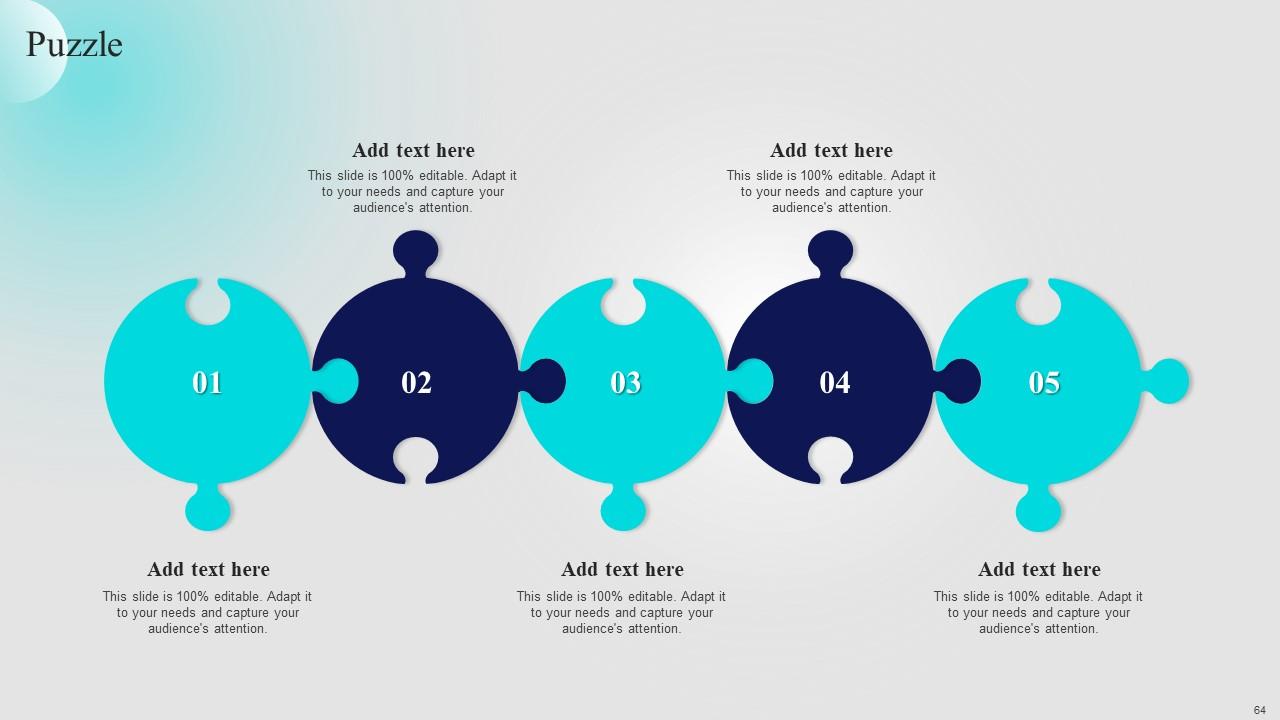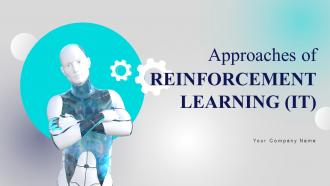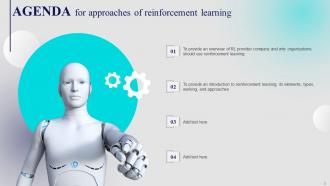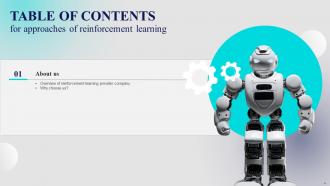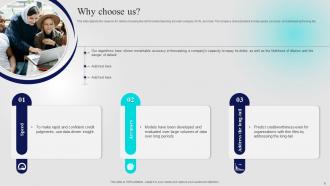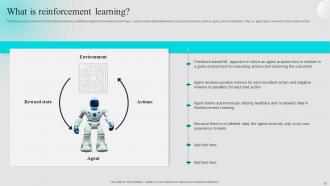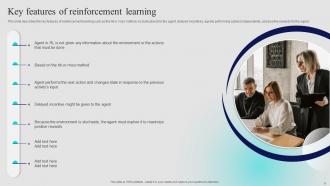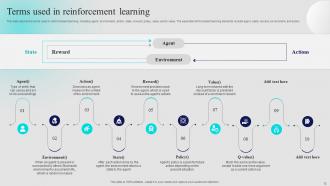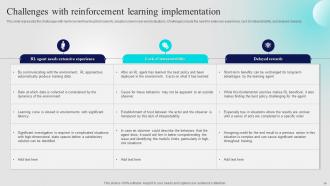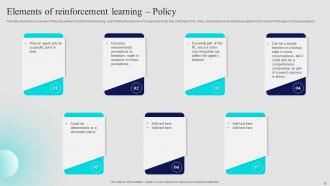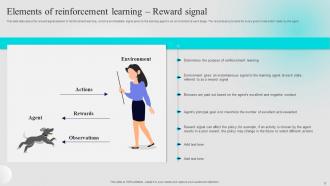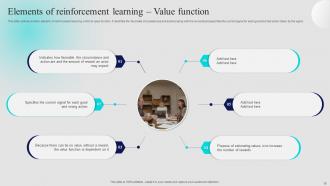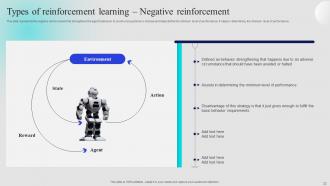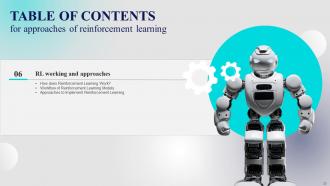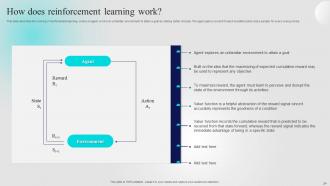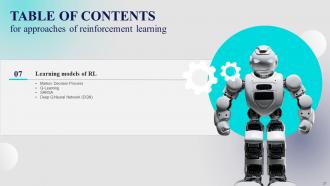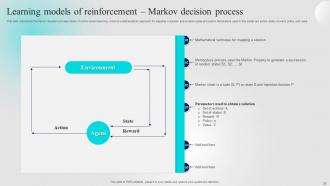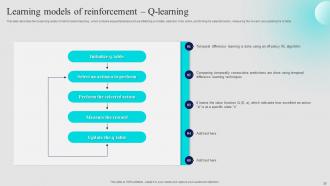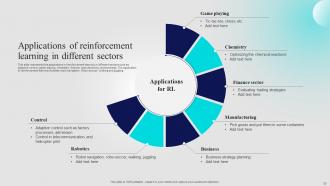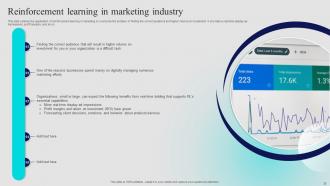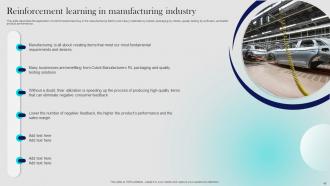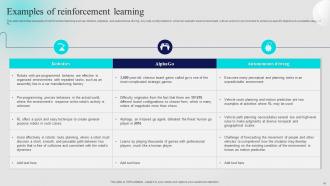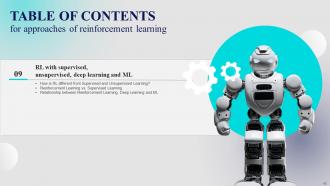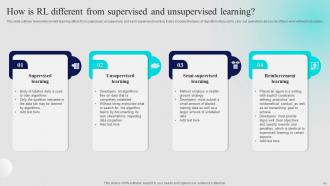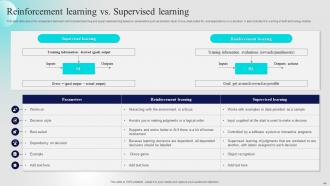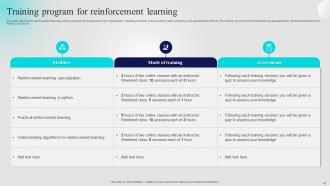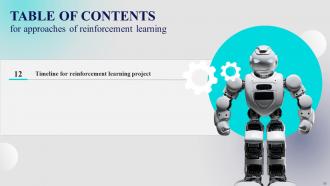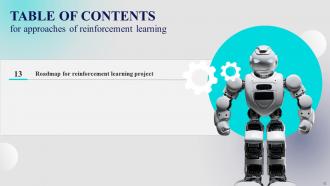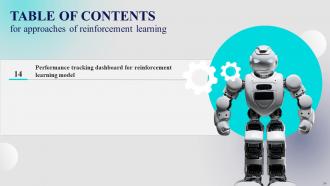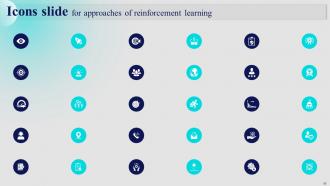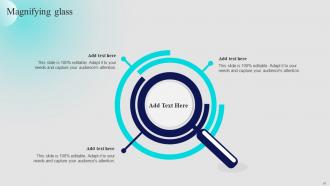Approaches Of Reinforcement Learning IT Powerpoint Presentation Slides
Discover the cutting-edge capabilities of our Reinforcement Learning Provider Company through our meticulously crafted Approaches of Reinforcement Learning PowerPoint presentation. It offers a concise yet comprehensive overview of our company, highlighting its unique algorithms that accurately predict its debt repayment capacity, the likelihood of dilution, and the risk of default. Our Reinforcement Learning in ML deck begins with a clear introduction to reinforcement learning, outlining its features, key terminology, benefits, and implementation challenges. It delves into the fundamental elements of RL, including policy, reward signal, value function, and model. Furthermore, our reinforcement learning PPT highlights its workflow, various approaches, and learning models like the Markov Decision Process, Q-Learning, SARSA, and more. To provide tangible context, our Types of Reinforcement Learning module showcases compelling examples of RL applications across diverse industries. Lastly, it includes a performance-tracking dashboard for monitoring the effectiveness of the reinforcement learning model. Get instant access.
Discover the cutting-edge capabilities of our Reinforcement Learning Provider Company through our meticulously crafted Appr..
- Google Slides is a new FREE Presentation software from Google.
- All our content is 100% compatible with Google Slides.
- Just download our designs, and upload them to Google Slides and they will work automatically.
- Amaze your audience with SlideTeam and Google Slides.
-
Want Changes to This PPT Slide? Check out our Presentation Design Services
- WideScreen Aspect ratio is becoming a very popular format. When you download this product, the downloaded ZIP will contain this product in both standard and widescreen format.
-

- Some older products that we have may only be in standard format, but they can easily be converted to widescreen.
- To do this, please open the SlideTeam product in Powerpoint, and go to
- Design ( On the top bar) -> Page Setup -> and select "On-screen Show (16:9)” in the drop down for "Slides Sized for".
- The slide or theme will change to widescreen, and all graphics will adjust automatically. You can similarly convert our content to any other desired screen aspect ratio.
Compatible With Google Slides

Get This In WideScreen
You must be logged in to download this presentation.
PowerPoint presentation slides
Deliver this complete deck to your team members and other collaborators. Encompassed with stylized slides presenting various concepts, this Approaches Of Reinforcement Learning IT Powerpoint Presentation Slides is the best tool you can utilize. Personalize its content and graphics to make it unique and thought-provoking. All the sixty five slides are editable and modifiable, so feel free to adjust them to your business setting. The font, color, and other components also come in an editable format making this PPT design the best choice for your next presentation. So, download now.
People who downloaded this PowerPoint presentation also viewed the following :
Content of this Powerpoint Presentation
Slide 1: This slide introduces Approaches of REINFORCEMENT LEARNING (IT). Commence by stating Your Company Name.
Slide 2: This slide depicts the Agenda of the presentation.
Slide 3: This slide includes the Table of contents.
Slide 4: This slide highlights the Title for the Topics to be covered further.
Slide 5: This slide represents the overview of the reinforcement learning provider company.
Slide 6: This slide depicts the reasons for clients choosing the reinforcement learning provider company for RL services.
Slide 7: Thsi slide includes the Heading for the Contents to be discussed in the upcoming template.
Slide 8: This slide states the Prime reasons for using reinforcement learning.
Slide 9: This slide includes the Heading for the Contents to be discussed next.
Slide 10: This slide gives an overview of reinforcement learning, a feedback-based machine learning technique.
Slide 11: This slide describes the key features of reinforcement learning.
Slide 12: This slide depicts the terms used in reinforcement learning.
Slide 13: This slide exhibits the Key benefits of reinforcement learning.
Slide 14: This slide presents the Challenges with reinforcement learning implementation.
Slide 15: This slide includes the Title for the Ideas to be covered further.
Slide 16: This slide depicts the Elements of reinforcement learning Policy.
Slide 17: This slide states the Elements of reinforcement learning.
Slide 18: This slide outlines another element of reinforcement learning which is value function.
Slide 19: This slide shows the model element of reinforcement learning that mimics the behavior of the environment.
Slide 20: This slide contains the Heading for the Ideas to be discussed next.
Slide 21: This slide describes the positive reinforcement type of RL.
Slide 29: This slide reveals the Q-learning model of reinforcement learning.
Slide 30: This slide depicts the State Action Reward State Action learning model of reinforcement.
Slide 31: This slide represents the deep Q neural network model of reinforcement learning that is Q-learning using neural networks.
Slide 32: This slide highlights the Title for the Topics to be covered further.
Slide 33: This slide represents the applications of reinforcement learning in different sectors.
Slide 34: This slide talks about how reinforcement learning can enhance gamers' gaming experience.
Slide 35: This slide outlines the application of reinforcement learning in marketing.
Slide 36: This slide represents reinforcement learning in image processing.
Slide 37: This slide outlines how reinforcement learning is used to train robots to perform their jobs like humans.
Slide 38: This slide represents the application of reinforcement learning in healthcare departments.
Slide 39: This slide talks about how reinforcement learning can improve broadcast journalism.
Slide 40: This slide describes the application of reinforcement learning in the manufacturing field to pick heavy materials.
Slide 41: This slide describes examples of reinforcement learning such as robotics, AlphaGo, and autonomous driving.
Slide 42: This slide mentions the Heading for the Contents to be discussed in the forthcoming template.
Slide 43: This slide outlines how reinforcement learning differs from supervised, unsupervised, and semi-supervised learning.
Slide 44: This slide talks about the comparison between reinforcement learning and supervised learning.
Slide 45: This slide represents the relationship between reinforcement learning, deep learning, and machine learning.
Slide 46: This slide highlights the Title for the Ideas to be covered next.
Slide 47: This slide depicts the reinforcement learning training program for employees in the organization.
Slide 48: This slide portarys the Heading for the Ideas to be discussed in the upcoming template.
Slide 49: This slide represents the pricing for building reinforcement learning models.
Slide 50: Thsi slide reveals the Title for the Contents to be further discussed.
Slide 51: This slide depicts the timeline for the reinforcement learning project.
Slide 52: This slide shows the Heading for the Topics to be covered next.
Slide 53: This slide displays the Roadmap for reinforcement learning project.
Slide 54: Thsi slide includes the Title for the Topics to be discussed further.
Slide 55: This slide represents the performance tracking dashboard for the reinforcement learning model based on different time frames and categories.
Slide 56: This is the Icons slide containing all the Icons used in the plan.
Slide 57: This slide is used for depicting some Additional information.
Slide 58: This slide incorporates the company's mission, vision, and goals.
Slide 59: This is the About us slide. State your company-related ifnormation here.
Slide 60: This is the 30 60 90 days plan slide for effective planning.
Slide 61: This is the Magnifying glass slide for minute details.
Slide 62: This is the Venn diagram slide.
Slide 63: Important notes for reminders and deadlines.
Slide 64: This is the Puzzle slide with related imagery.
Slide 65: This is the Thank You slide for acknowledgement.
Approaches Of Reinforcement Learning IT Powerpoint Presentation Slides with all 70 slides:
Use our Approaches Of Reinforcement Learning IT Powerpoint Presentation Slides to effectively help you save your valuable time. They are readymade to fit into any presentation structure.
FAQs
The key benefits of reinforcement learning include the ability to learn from interactions with the environment, adaptability to complex and dynamic problems, potential for continuous improvement through feedback, capacity for sequential decision-making tasks, and applicability in various domains such as gaming, marketing, healthcare, and robotics.
The elements of reinforcement learning are the policy, the value function, the model of the environment, and the reward function. These elements work together to guide the learning process and decision-making in reinforcement learning algorithms.
Reinforcement learning enhances gamers' gaming experience by enabling intelligent agents to learn and optimize strategies through interactions with the game environment. It leads to dynamic and adaptive gameplay, making games more challenging and engaging for players.
Reinforcement learning finds practical applications in various sectors, including marketing, image processing, robotics, healthcare, broadcast journalism, manufacturing, and autonomous driving. It improves decision-making, task automation, and efficiency in these domains.
Reinforcement learning differs from supervised learning, unsupervised learning, and semi-supervised learning in the way it learns from feedback. In reinforcement learning, an agent learns from rewards or penalties based on actions taken in an environment, while the other learning approaches rely on labeled or unlabeled data for training.
-
I loved the hassle-free signup process. A few minutes and, I had this giant collection of beautiful designs.
-
I am not the best at presentations but using SlideTeam’s PPT template made it easier for me. Thank you SlideTeam!




